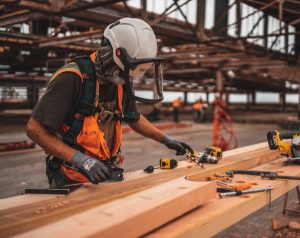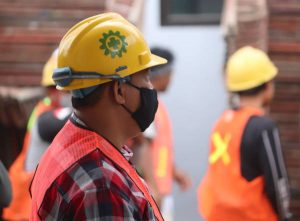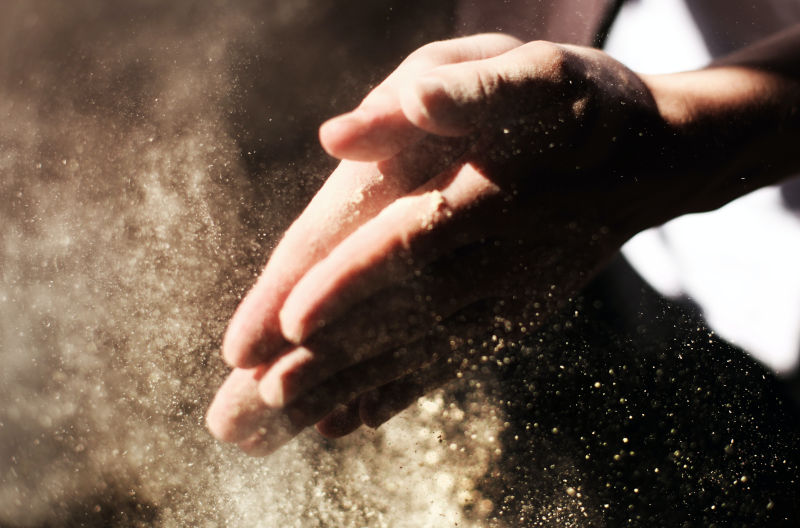Working in construction is not an easy job and can take a toll on your physical health at times. This is why safety is so important on the worksite, but sometimes you don’t realise what might be affecting you. Have you ever wondered if construction dust is bad to breathe in?
Construction dust is one of the worst things you can breathe in, which is why protective gear such as masks should be worn. Construction dust can significantly damage health. Long-term exposure to this dust leads to fatal lung conditions. In some instances, it can cause a worker’s premature passing.
If you work in construction, here is everything you must know about construction dust.
Why construction dust is bad for health
 Construction dust is bad for your health because it contains toxic materials. That’s why it’s crucial to know about the type of dust and how it can negatively impact your health. If you work at a construction site, some potential lung diseases you could experience are:
Construction dust is bad for your health because it contains toxic materials. That’s why it’s crucial to know about the type of dust and how it can negatively impact your health. If you work at a construction site, some potential lung diseases you could experience are:
- COPD (Chronic obstructive pulmonary disease)
- Lung cancer
- Asthma
- Silicosis
Keep in mind that most of these diseases will take a long time to develop in your lungs. That is because as you are exposed to the dust, it will keep building up in your lungs and harm them long-term. Sometimes, you don’t notice the symptoms greatly and find out too late to reverse the effects of the damage.
Because of these health risks, it’s crucial to take the right precautions when working at a construction site. It will limit your exposure and ensure better health.
What Does Construction Dust Include?
There are many things included in construction dust. That’s because working on such a site means working with various materials. The top types of construction dust include:
- Silica Dust: This construction dust is created when workers are working on materials containing silica. These include sandstone, mortar, concrete, and many others. So, even bricklayers in Ireland will be affected by this dust.
- Wood Dust: As the name suggests, this dust is created when working with various wood. Hardwood, plywood, softwood are some examples of common construction wood that contribute to the dust.
- Low Toxicity Dust: This is created when working with materials containing little to no silica. They include dolomite, gypsum, marble, and more.
These are the most common types of construction dust you will experience on the site. You will encounter construction dust even with home renovations, for example, dust when tiling a fireplace. It’s important to limit your exposure and protect yourself against such dust. In the long run, it will be much better for your health.
Ways To Control Construction Dust And Its Health Risks
If you’re an employer, it’s your responsibility to create a safe work environment for your crew. That is why it’s vital to take the right steps to control the dust and risks associated with it. Here are the top ways you can protect your employees:
-
Reduce Dust Before Work Starts
Safety starts even before the construction work begins. You can take steps to stop or reduce construction dust before work. That means you must choose the right materials, tools, and work methods that will cause the least harm and exposure to dust. The biggest thing is to make sure that your crew will have the appropriate PPE to wear on site. This is their main protection against construction dust.
Here are some of the top tips you can apply to reduce the dust before work begins:
- Select the correct size of building materials. Doing this means you will require less preparation and cutting for the work.
- Use tools that are less powerful but can offer the same efficiency. For example, you can always replace a cut-off saw with a block splitter. Also, choose quality bricklaying and masonry tools to prevent excess dust.
- Choose a method of work that reduces risk. You can opt for a direct fastening system.
- Use silica-free abrasives.
You can also look for other methods and tools that will reduce construction dust. Plan what you will use and how you will work before it all starts because a method will support your workers and their safety. It will help you contain the dust and risks.
-
Utilize Dust Controlling Methods
 There are times where you can’t completely minimise construction dust because the materials produce it no matter what. In these cases, it’s important to control the dust from going into the air and spreading. One of the top ways many construction sites do this is through water.
There are times where you can’t completely minimise construction dust because the materials produce it no matter what. In these cases, it’s important to control the dust from going into the air and spreading. One of the top ways many construction sites do this is through water.
Site leaders often use water to dampen down clouds of dust. It sometimes isn’t enough to just dampen the material before working on it. Supply enough water to stop construction dust from travelling through the air.
On the other hand, you can also use an on-tool extraction to remove dust as it produces. It is an LEV (local exhaust ventilation) that will fit directly on the tool you are using. While doing this method, use an extraction unit to the appropriate specifications so it can control the dust effectively.
-
Use Proper Protective Equipment
While the extraction and water methods are excellent, you must still use protective equipment while working on a construction site. It will help you reduce exposure and ensure that you are staying healthy. The most important equipment is:
- A respiratory mask
- Safety goggles
- Coveralls
- Boots
A respiratory mask is the most important thing, but it must offer adequate protection from dust. For example, the general level of construction dust is APF 20. If you choose a mask for this, it means you will only breathe 1/20th of the dust. Over 40% of construction workers are likely to be suffering from abnormal lung functioning because of construction dust exposure. Masks will help reduce this by protecting your airways.
Besides that, all protective equipment must be compatible with one another and fit perfectly. If there are any loose sides, you will be breathing in dust unintentionally. So, be sure to get the right protective equipment for maximum protection.
As a construction worker, you need to take extra care while on-site to limit your exposure to construction dust. PPE is the best way to do it, so suit up!
You know that bricks create dust on the worksite, but do you know if they are good building insulation? Or how about if you can add a door to a brick wall? As well as valuable masonry tools, Paragon Tools Ireland has plenty more useful construction information in our resources!



